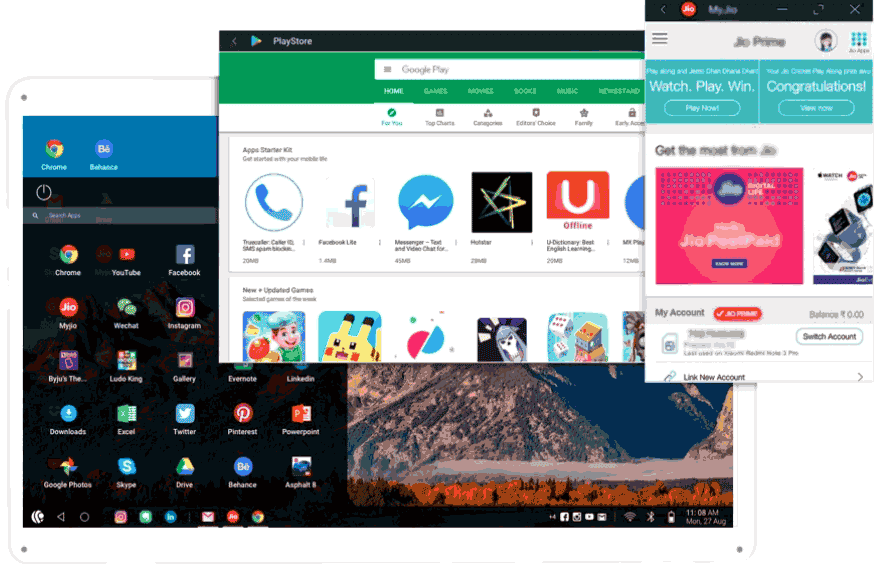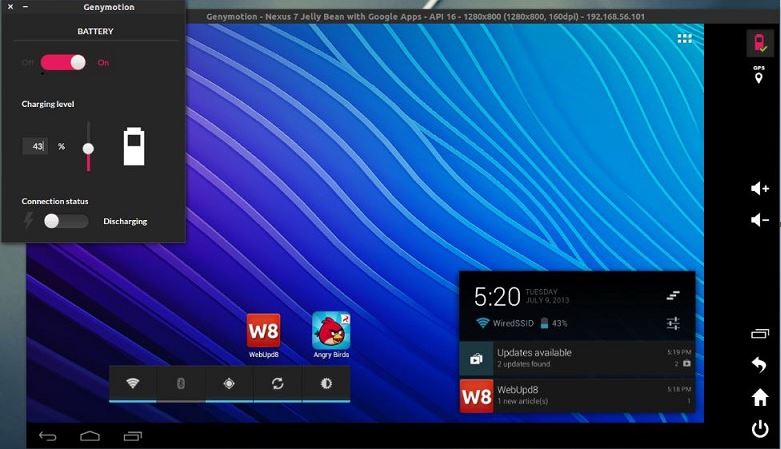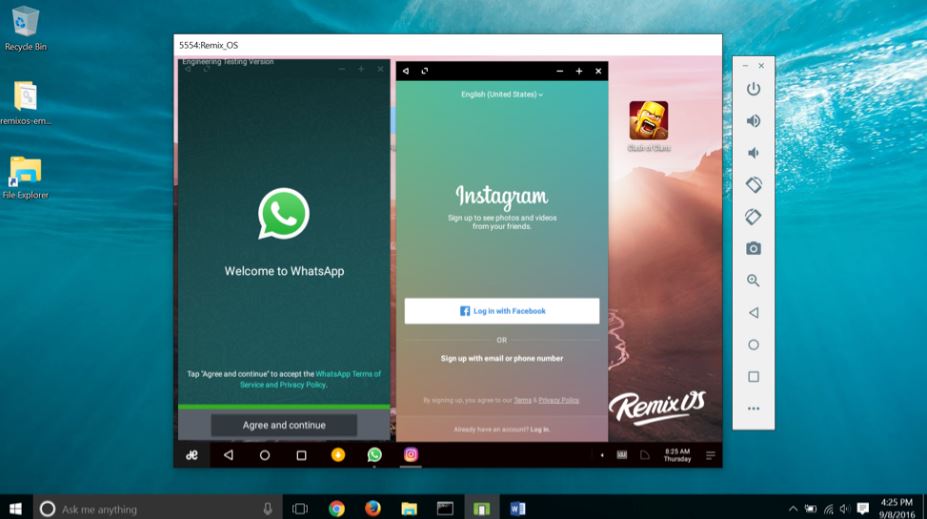

- #ANDROID EMULATOR MAC COMMAND LINE HOW TO#
- #ANDROID EMULATOR MAC COMMAND LINE MAC OS X#
- #ANDROID EMULATOR MAC COMMAND LINE INSTALL#
- #ANDROID EMULATOR MAC COMMAND LINE FULL#
- #ANDROID EMULATOR MAC COMMAND LINE ANDROID#
You should see something like this: Created AVD 'Lollipop' based on Android 5.0.1, ARM (armeabi-v7a) processor, target # from list of targets, can be ID or name You can do this with the following kind of a command: /tools/android create avd To run an instance of the Android operating system inside the emulator, you will first need to create an Android Virtual Device. You can locate the Android emulator tool as part of the Android SDK here: /tools/emulatorįull information about the Android Emulator on Creating an Android Virtual Device Therefore, to do Android development, you will not necessarily need to have an actual physical device at your disposal.

The Android Emulator emulates a complete Android device in software on a desktop computer. (Followed by other devices, if available) The Android Emulator You should see available device definitions like the following: Available devices definitions: To display a list of available Android device(s) that are currently configured, try this: /tools/android list devices Take note of the "id" line in this list, as that is the value that you can use in other places to refer to the specific version of an Android SDK target. (Followed by other targets, if available) Tag/ABIs : default/armeabi-v7a, default/x86_64 You should see available targets like the following: Available Android targets: To display the list of available Android target(s) / SDK versions that are available on the current system, try this: /tools/android list targets
#ANDROID EMULATOR MAC COMMAND LINE INSTALL#
update sdk : Updates the SDK by suggesting new platforms to install update adb : Updates adb to support the USB devices declared in the create uitest-project : Creates a new UI test project. update lib-project : Updates an Android library project (must already have create lib-project : Creates a new Android library project. update test-project : Updates the Android project for a test package (must create test-project : Creates a new Android project for a test package. update project : Updates an Android project (must already have an

create project : Creates a new Android project. update avd : Updates an Android Virtual Device to match the folders delete avd : Deletes an Android Virtual Device. move avd : Moves or renames an Android Virtual Device. create avd : Creates a new Android Virtual Device. list sdk : Lists remote SDK repository.

list avd : Lists existing Android Virtual Devices. list : Lists existing targets or virtual devices. Valid actions are composed of a verb and an optional direct object: clear-cache: Clear the SDK Manager repository manifest cache. v -verbose : Verbose mode, shows errors, warnings and all messages. s -silent : Silent mode, shows errors only. You should see commands with corresponding descriptions like the following below: Usage: android action Going back to the command line, to list some of the things that can be done with the android tool, try this: /tools/android -h
#ANDROID EMULATOR MAC COMMAND LINE FULL#
Full information about this GUI tool can be found on the Android developer site:įull information about the Android SDK Manager on The Android SDK Manager lets you download and install, uninstall, and update necessary packages (SDK tools and platforms) that you need to develop an Android app. By default, the Android SDK Manager will be displayed: To try it, open up your command line, and issue the following kind of command (obviously replacing the beginning with the complete path to the actual directory where you have installed the SDK files): /tools/android If you have the Android SDK in place, you can locate the "android" command inside the tools directory. Therefore, the instructions given here should be applicable regardless of your operating system.
#ANDROID EMULATOR MAC COMMAND LINE MAC OS X#
The Android SDK and the associated commands work roughly exactly the same way on Windows, Mac OS X and Linux. (The Android SDK can be downloaded separately as a stand alone installer, or as part of the bigger Android Studio installer) If you have not done so yet, you can download the Android SDK here: /sdk (1) You have installed the latest Java Development Kit (JDK) from Oracle. To properly follow this material, you must have the following in place:
#ANDROID EMULATOR MAC COMMAND LINE HOW TO#
This document describes the usage of common tools used for Android development on the command line, particularly Android ( android), Android Debug Bridge ( adb) and how they can be used to create an Android application project and how to install and debug an Android app using the command line.Īfter reading this document, you should be familiar in using the common tools for Android development stated above in creating, installing and debugging Android apps.


 0 kommentar(er)
0 kommentar(er)
